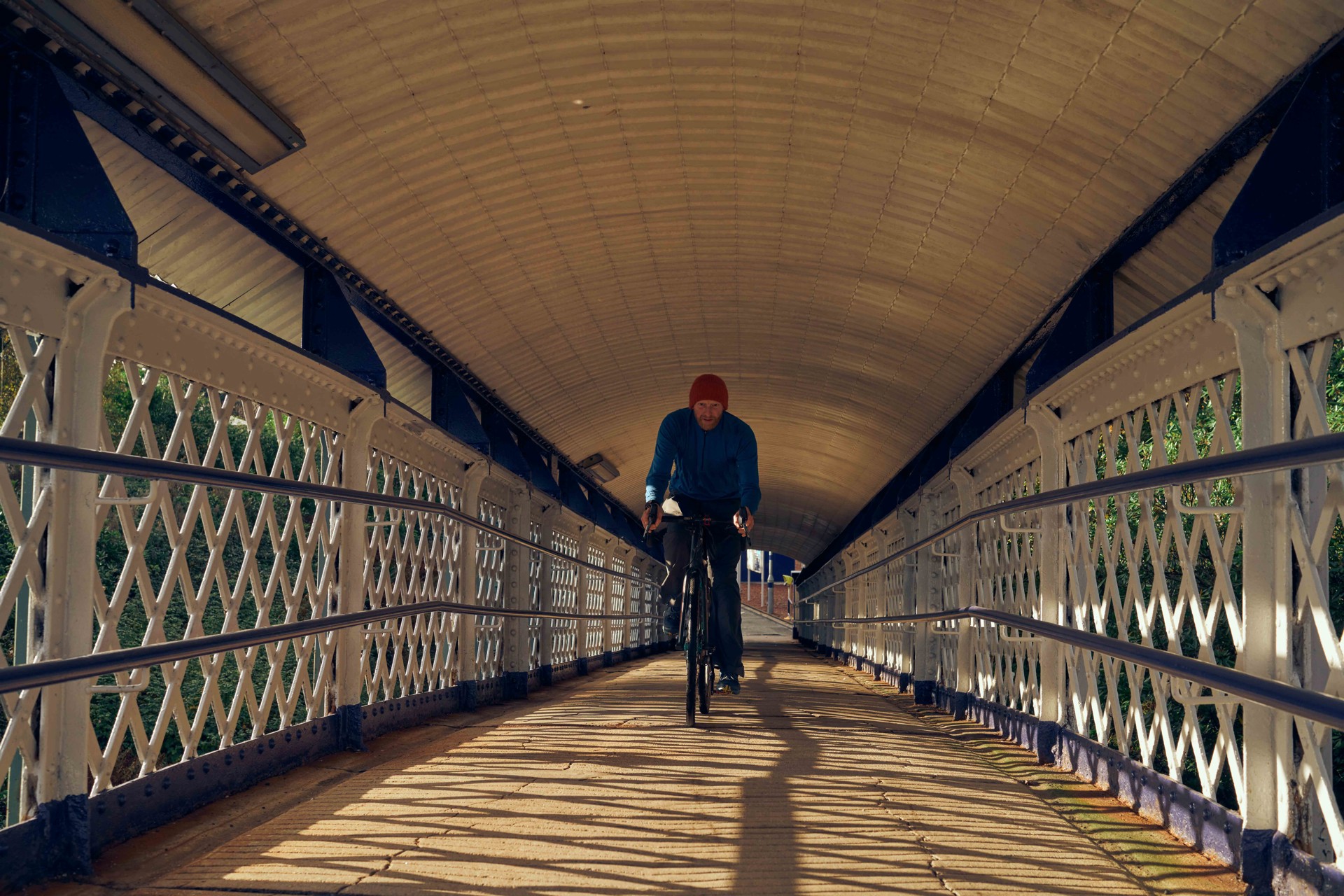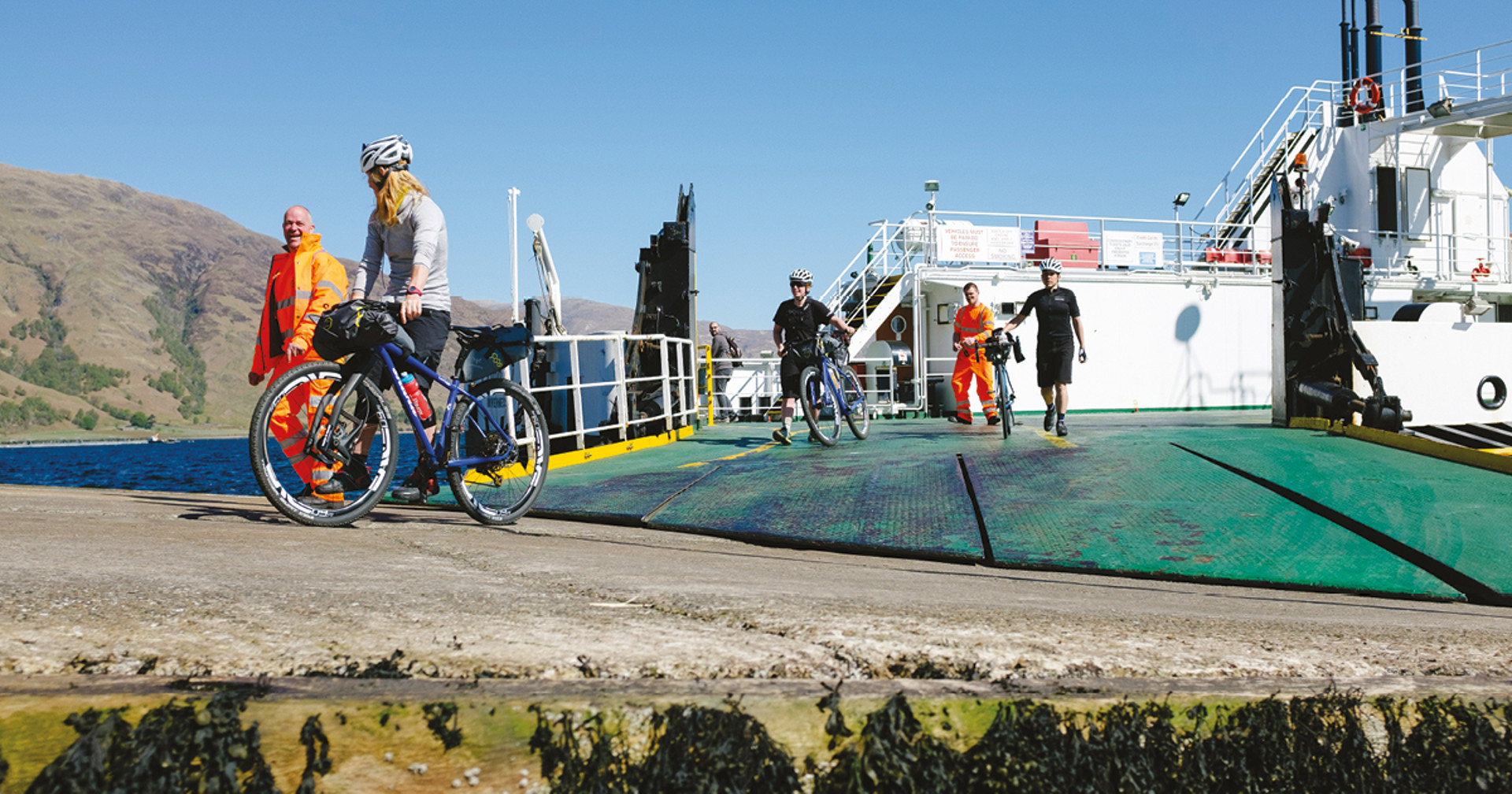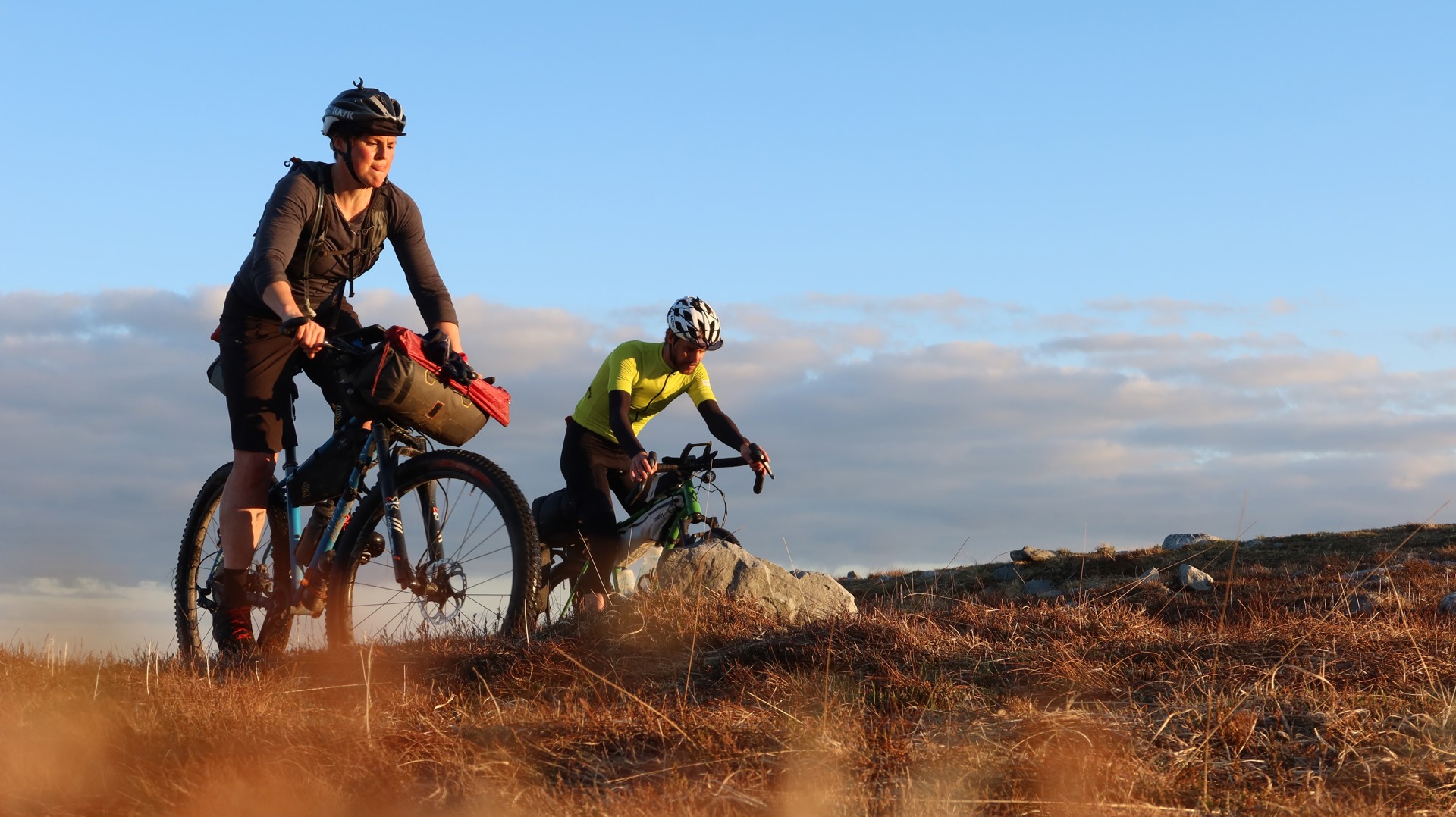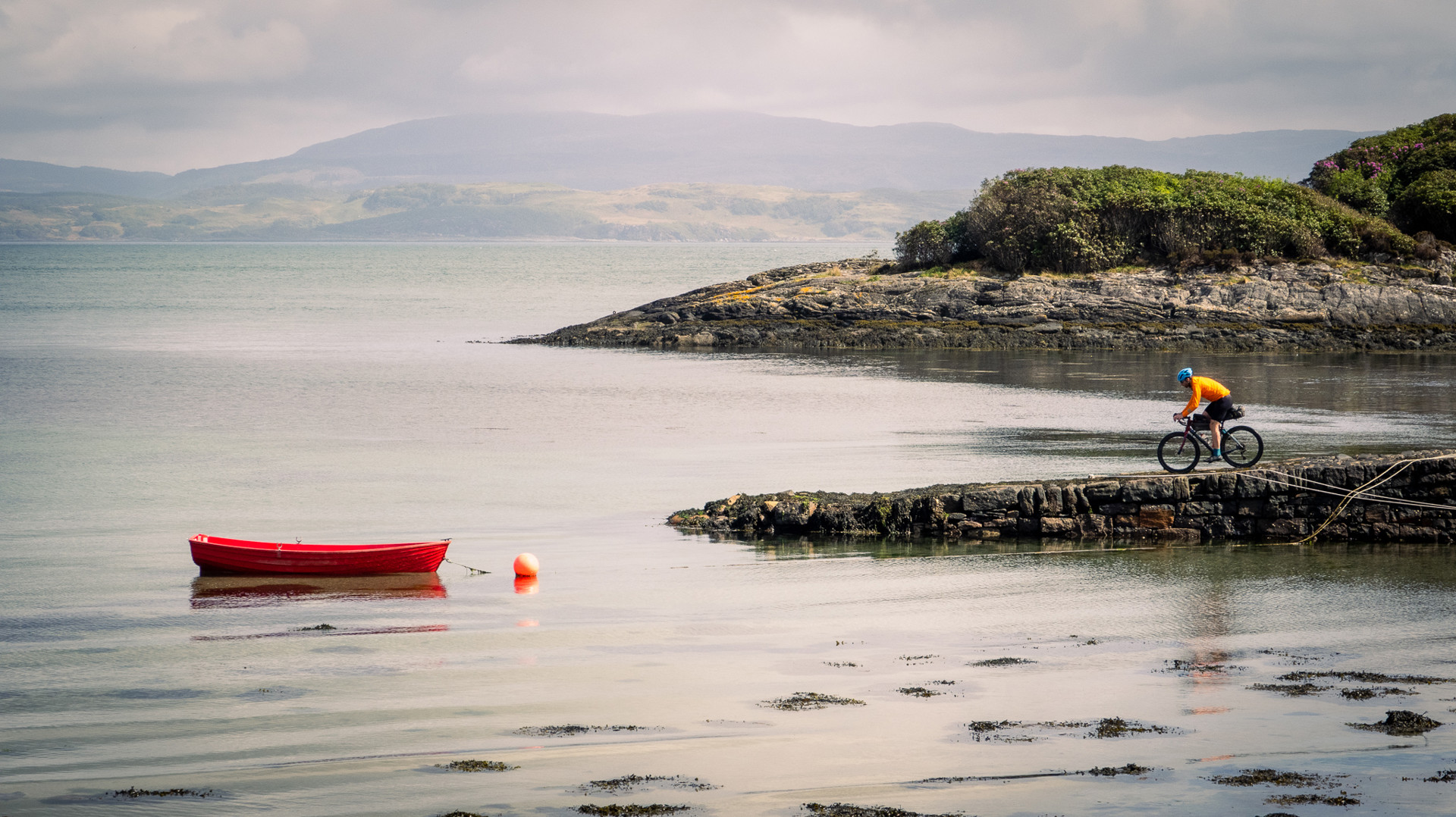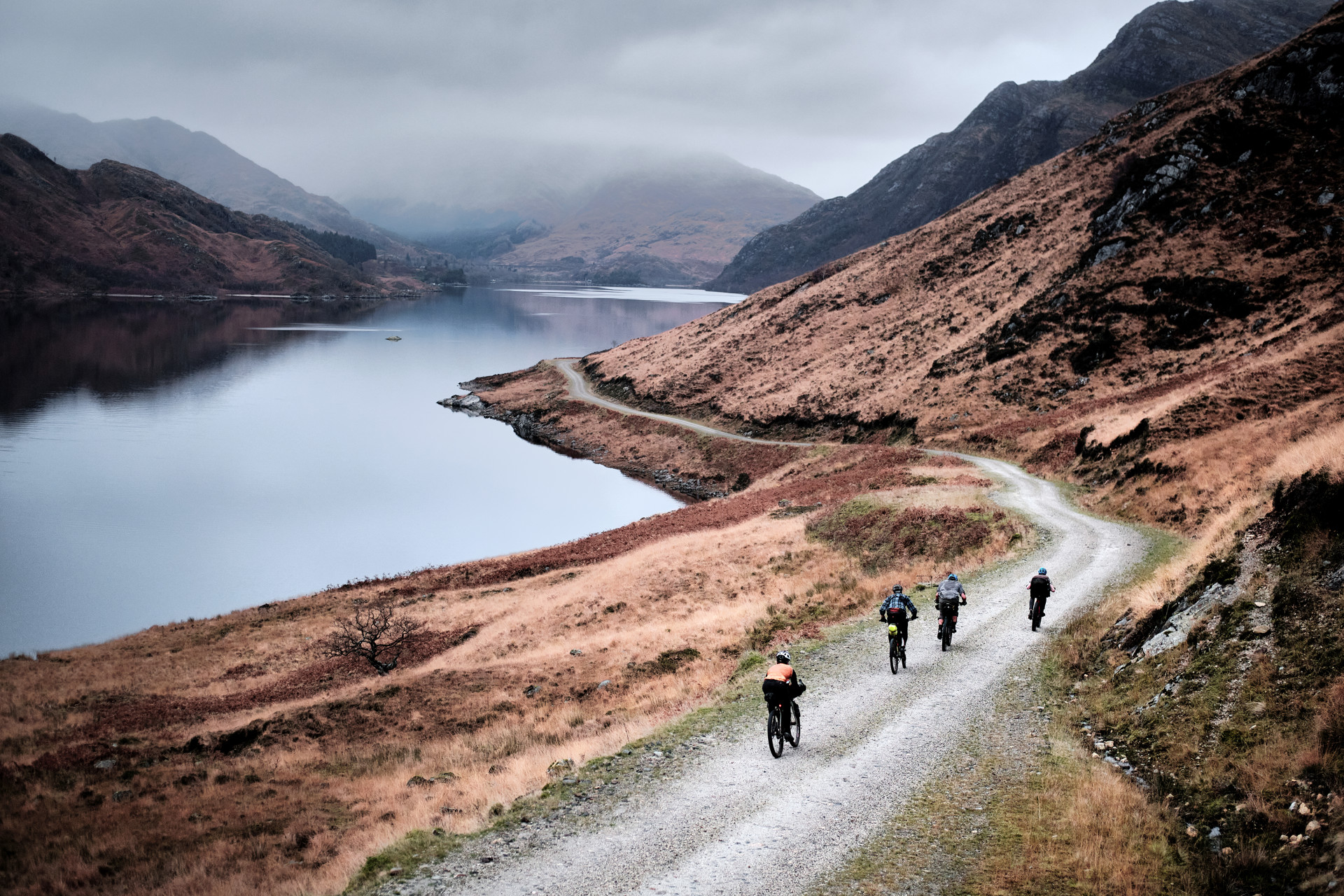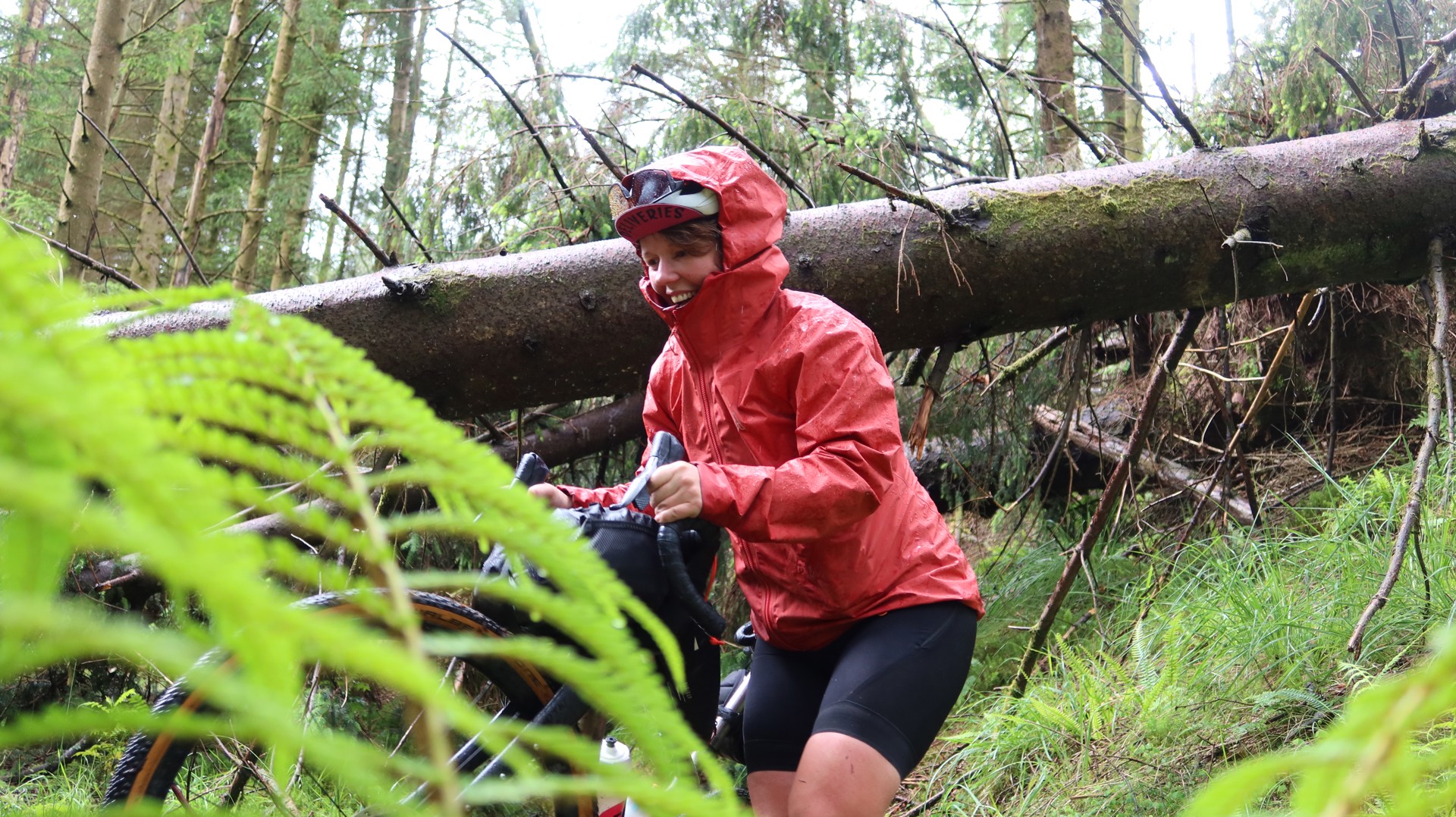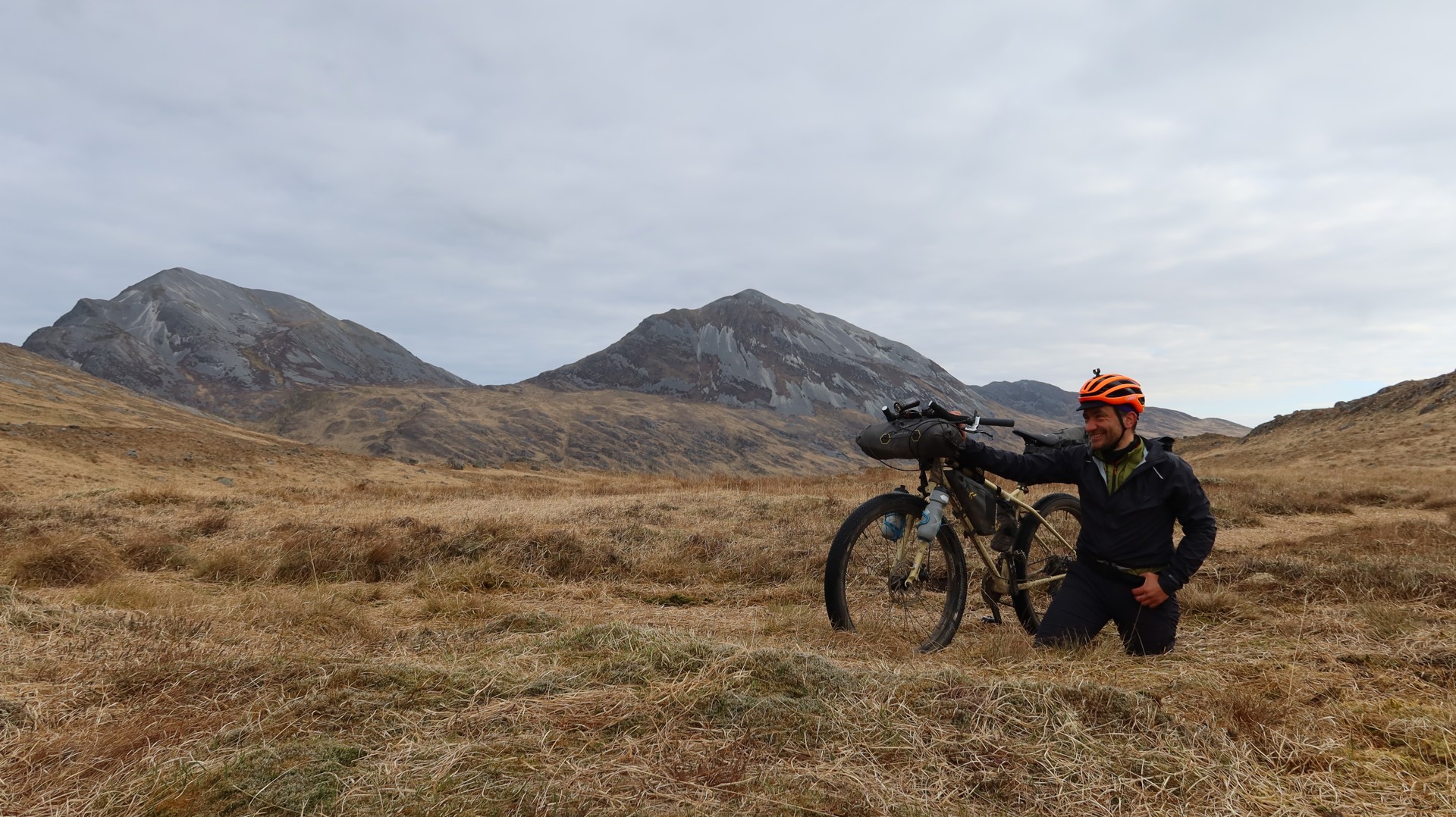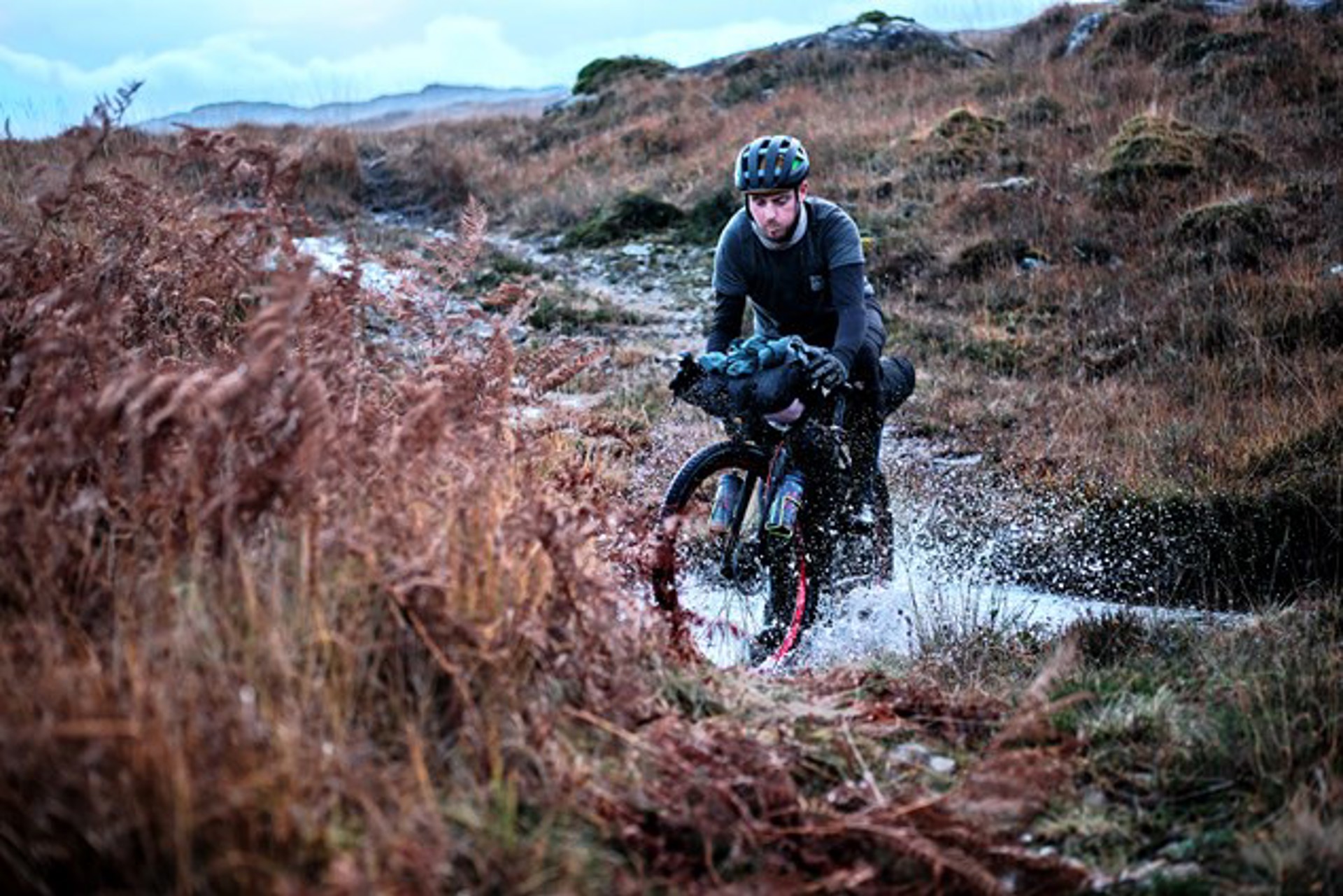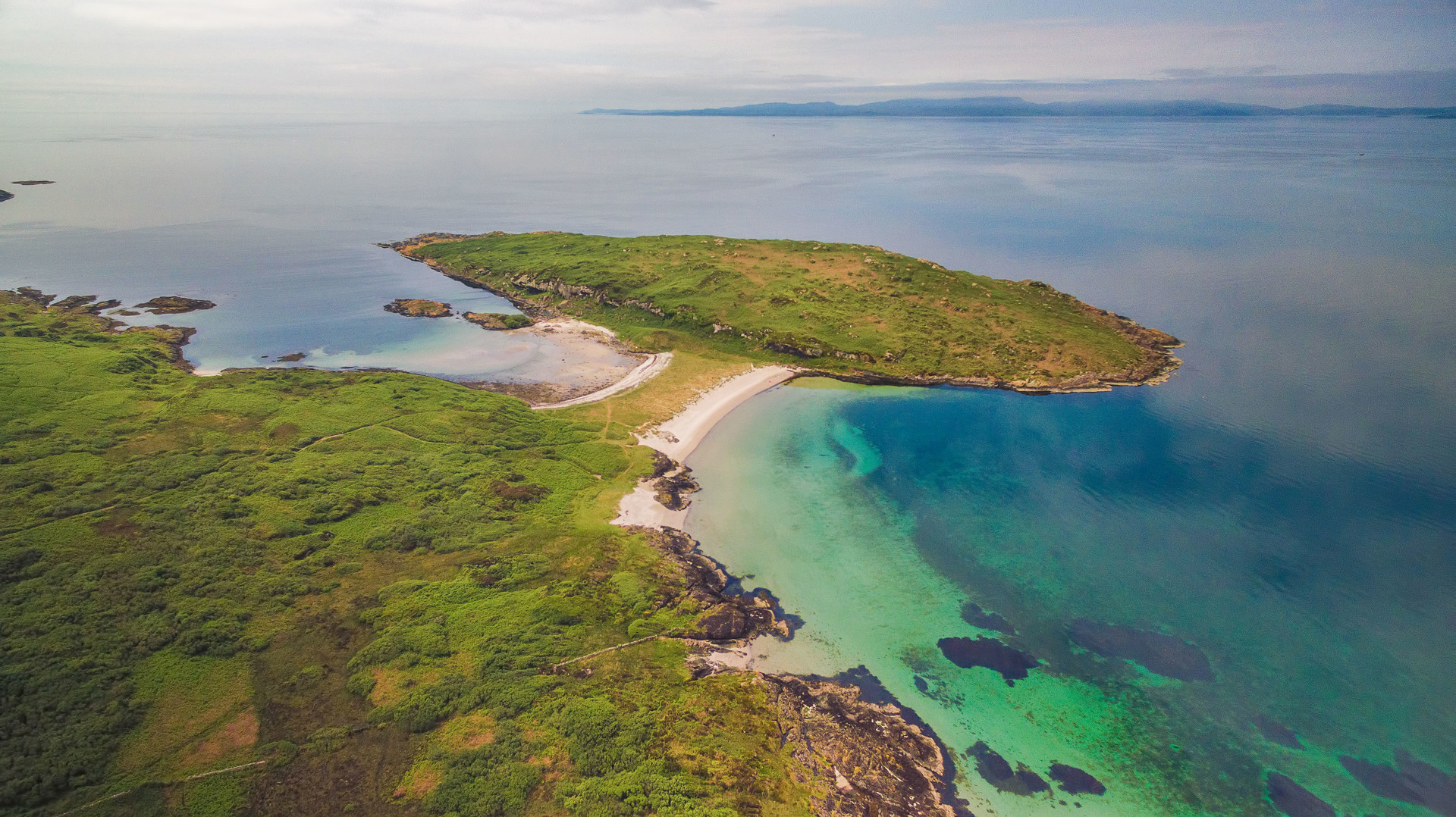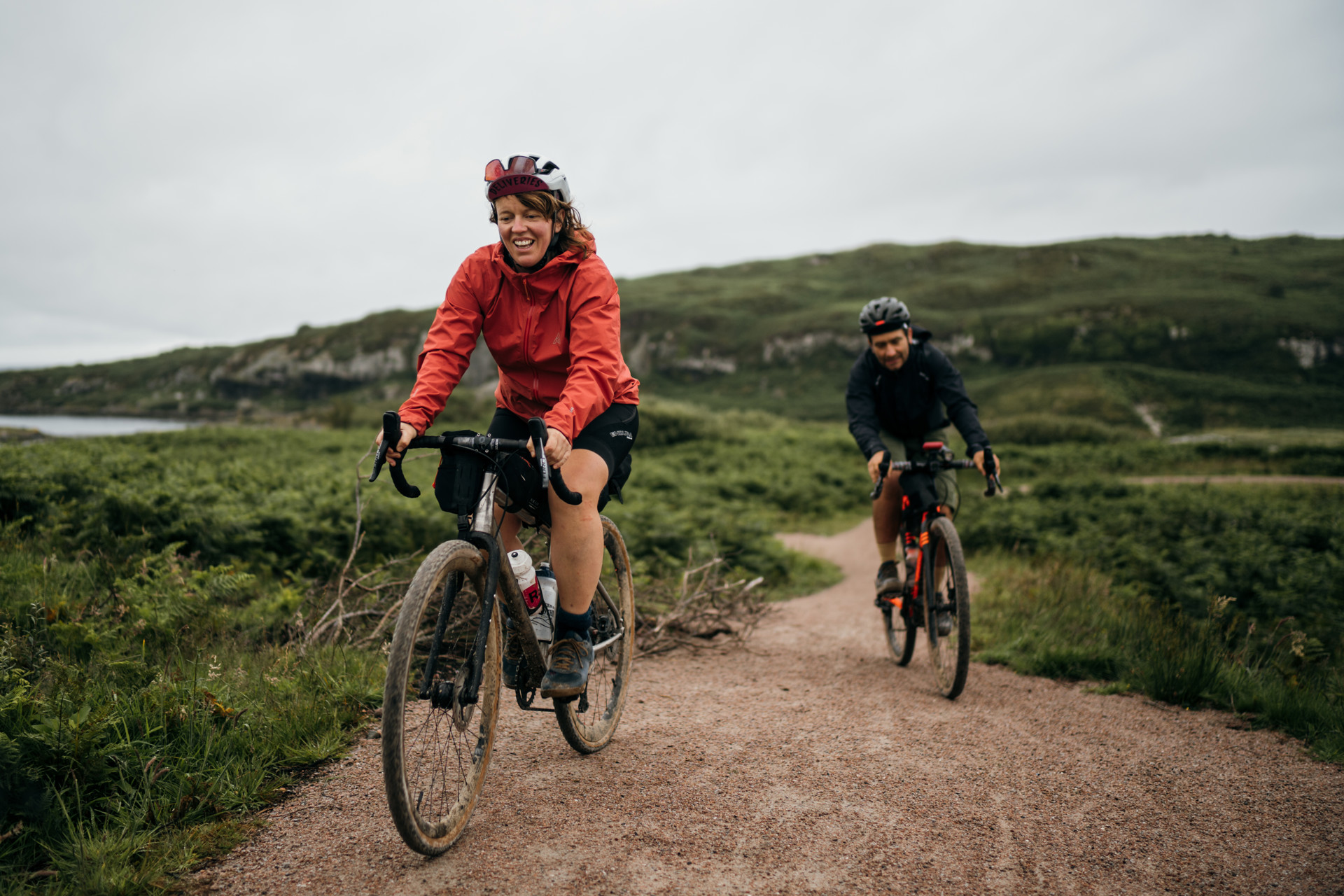
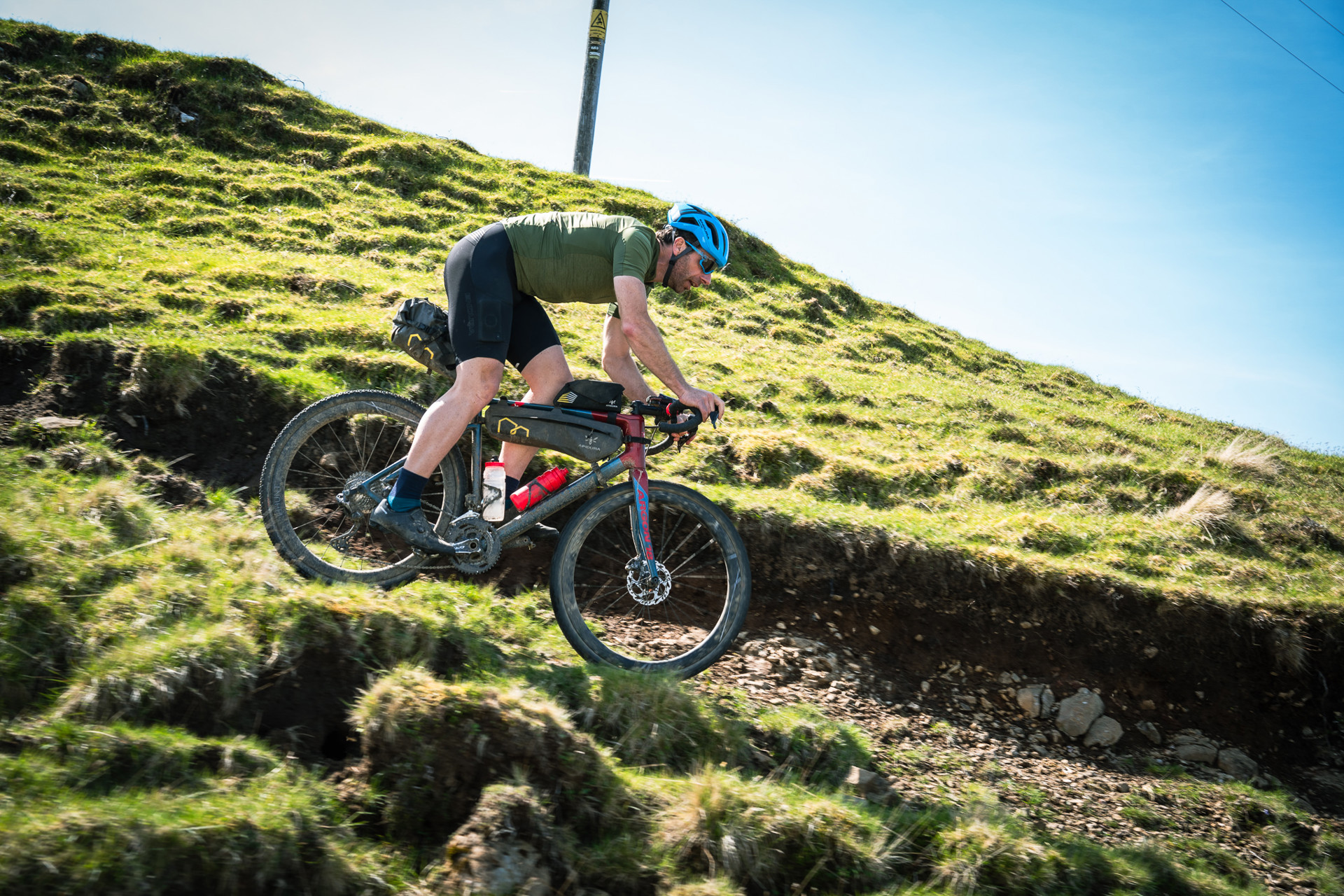
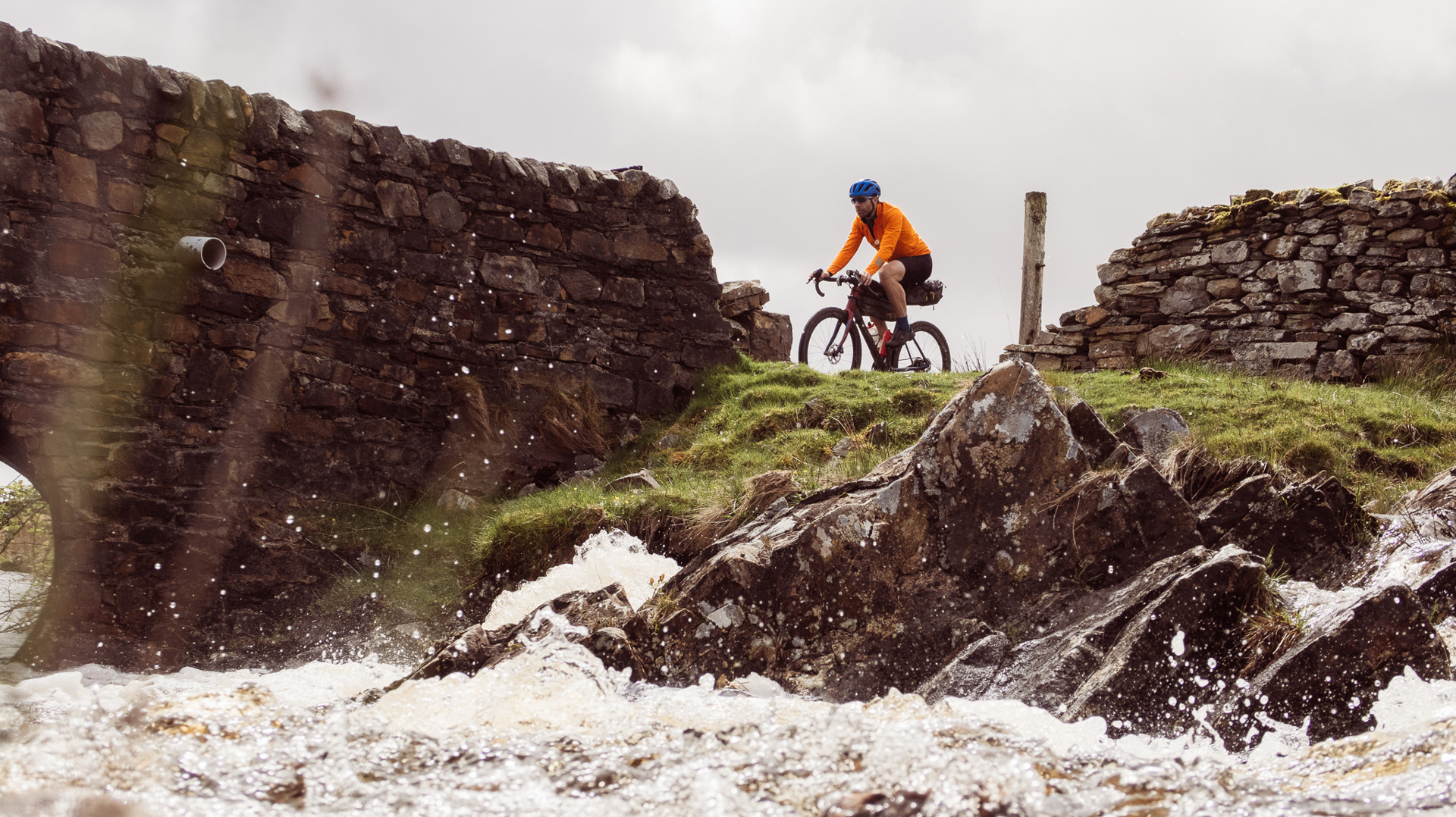
Gravel Biking Adventures in Argyll & the Isles
Scotland's Cycle CoastWith nearly a third of the land swathed in forest and woodland and an intricate network of tracks and off-road trails, Argyll & the Isles is perfect for gravel biking.
The new ScotRail Highland Explorer has been specially designed to carry cycles giving easy access to stations along Scotland’s scenic west coast between Helensburgh and Oban. The transport infrastructure makes it simple to adapt routes to suit your needs. Enjoy a scenic early morning cycle, a big day out or a weekend adventure.
Hop off at Helensburgh, Lochgoilhead, Arrochar, Ardlui, Dalmally, Taynuilt, Connel or Oban to join a network of pre-mapped routes. Expect lush forests, deep glens beneath towering mountains, vast lochs, beautiful beaches, historic castles, and an abundance of wildlife. If you’re lucky, you might even spot an osprey or stag amidst the stunning, ever-changing landscape.
Along the way, you’ll find freshly brewed coffee and cake, incredible seafood and fabulous craft breweries and distilleries from the Wild About Argyll Taste Trails.
With its roots in cyclo-cross , gravel biking has seen a massive surge in popularity. Gravel bikes are designed to excel on gravel and tarmac, dirt trails and forest roads. They’re light, they’re fast and they’re versatile. They provide sufficient challenge for experienced cyclists whilst offering a great introduction to cycling for novices.
Discover the Loops
Oban to Glen Lonan Gravel Loop
Level: EasyStart & finish: Oban Railway Station
Distance 18.7km | Total Ascent 270m | Riding Time 1.5-2 hours
Terrain: Mostly tarmac, access roads and quiet roads with short sections on paths.
Highlights: If you brave the steep climb (there is an alternative!), there are great views over Oban and the bay and towards the Isle of Mull.
Route Level: Intermediate
OS Grid Ref: NM 85813 29882
Nearest Parking: Pay and display beside the CalMac terminal
Key Facilities on Route: Oban (all facilities), Connel (shop, accommodation, food, railway station)
OS Landranger Map: 49
Route Description
The route starts at Oban Railway Station and follows the Caledonia Way up Glencruitten Road. After Glencruitten the route leaves the Caledonia Way to follow a small road parallel to the West Highland Line. There are some short steep sections here, but after reaching the highest point the route gradually descends towards Connel, which almost marks the halfway point.
From here the route follows a minor road on the Caledonia Way gradually up to the top of Glen Lonan, reaching the highest point and then descending into Oban. The last climb up towards Battery Hill can be avoided by following the same route back to the train station on the return journey as on the way here, but the extra climbing is rewarded with great views over the town and bay, and on towards the Isle of Mull. From Battery Hill it’s all downhill back to the station.
Lismore and Loch Etive Gravel Loop
Level: DifficultStart & finish: Oban Railway Station (Or optional start & finish at Connel Railway Station
Distance 76.2 km (inn. 12.8 km by ferry – check the timetables) | Total Ascent 800m | Riding Time 6-7 hours
Terrain: A mixture of singletrack, quiet roads, well-graded gravel paths, cycle paths and a short hike-a-bike section.
Highlights: The old lime kiln and abandoned village at Lismore with fantastic views towards the Morvern peninsula, the coastal track to Clach Thoull - a raised natural rock arch, the shores of Loch Etive and Loch Creran and the magical Falls of Lora.
Route Level: Expert
OS Grid Ref: NM 85813 29882
Nearest Parking: Pay & display only, beside the CalMac terminal
Key Facilities on Route: Oban (all facilities), Lismore (shop, cafe, accommodation), Port Appin (shop, food), Loch Creran (food), Connel (shop, accommodation, railway station, food)
OS Landranger Map: 49
Route Description
The route starts at Oban Railway Station and follows the waterfront to the ferry terminal. From here a ferry leaves twice daily to the Isle of Lismore. Best described as damp and wild, but utterly beautiful, Lismore offers an amazing playground for gravel cycling. Arriving at the ferry terminal in Achnacroish a short wait will give way to all cars on the ferry, and make the climb up the road more enjoyable. The route climbs steeply on a small tarmac road to the ‘main road’, but leaves the B8045 again soon, heading towards Sailean.
In the 19th century lime was quarried on Lismore, and the route soon crosses the site of a quarry with an old lime kiln and an abandoned village, with fantastic views towards the Morvern peninsula on a clear day. After a short climb on a gravel track the route rejoins the B8045, before a well-graded track climbs on the right away from the road and towards open grassland. After passing a house the route continues on a minor road to meet the B8045 at the Lismore Gaelic Heritage Centre, where a museum explores the gaelic heritage of the island and a cafe offers a welcome stop to eat. From here the ferry terminal on the northern end of the island is reached by tarmac.
The passenger ferry to the mainland takes bikes, and runs every hour during most days. Arriving at the Pierhouse in Port Appin the route passes the small village before joining a gravel track along the coast to Clach Thoull, a raised natural rock arch developed along a dipping fault plane in the headland. The Gaelic name means 'hole in the rock'. From here a walking track leads back to the road, before a cycle and walking track on the left heads over the Jubilee Bridge towards the Caledonia Way. Castle Stalker, famous for its appearance in the Monty Python movies, can be seen from the bridge. The route continues on the cycle route past the village of Appin and over Loch Creran towards Barcaldine. A cafe shortly after the bridge is another good rest stop.
Shortly before the village the route follows a forestry track east, circumnavigating a loch and then heading west, before turning south and rejoining the tarmac road from Barcaldine to Bonawe. The next section of the route requires good stamina, riding skills and an adventurous spirit, but continuing on the road south cuts out this section. The route follows the road north before climbing on a gravel track back towards Beinn Lora.
Care is needed to find a small path on the left after ca. 5.5 km, which can be very boggy and unrideable. The track improves gradually, and becomes much better after crossing a river. This is an old coffin road towards Ardchattan on the shores of Loch Etive. Crossing through a farm the route joins the Bonawe road again along the shores of Loch Etive, with Ardchattan close by. Here the ruins of the priory church, now in the care of Historic Scotland, can be seen by accessing them through the garden.
A considerable collection of early stones are on display as well as those still in situ within the ruins. Things get much easier now as the route follows the flat road into North Connel, and then crosses the Falls of Lora on a bridge. The Falls of Lora are a tidal race popular with white water kayakers and divers as well as tourists and photographers. Connel offers an alternative end point, as trains run from here back to the start in Oban or towards Glasgow and Fort William, but the route continues for a short while on the A85, before continuing parallel to the West Highland Line on a gravel track and small road into Oban.
Shortly after Glencruitten the route climbs on small roads and tracks to Battery Hill, where the view from McCaig's Tower, also known as McCaig's Folly, overlooks the town and bay. From here it’s all downhill back to the station.
Taynuilt to Fearnoch Gravel Loop
Level: IntermediateStart and finish: Taynuilt Railway Station
Distance 20.6 km |Total Ascent 280m | Riding Time 2-2.5 hours
Terrain: A mixture of quiet roads, well-graded gravel paths and a short section on a busy road.
Highlights: Highland cattle at Glen Lonan, Angus’s Garden created by a mother for her son who died in the 1950s, Bonawe iron furnace and the shores of Loch Etive.
Route Level: Intermediate / Straightforward
OS Grid Ref: NN 00352 31212
Nearest Parking: At the station, also in the village
Key Facilities on Route: Taynuilt (shop, accommodation, food)
OS Landranger Map: 49
Route Description
The route starts at Taynuilt Railway Station, situated in the heart of the village. It passes the village shop and tea room, before crossing the A85 and following the Caledonia Way on a quiet road out towards Glen Lonan. A delight in all seasons, the glen hosts a residential herd of Highland cattle, which are often found grazing close to the road. The route follows a track towards Angus's Garden, which was created out of a mother’s love for her son, who died in the 50s in Cyprus. Shortly after the entrance to the garden the route enters Fearnoch Forest, and continues on well-maintained tracks through this area.
It reaches the small hamlet of Fearnoch and then travels back to Glen Lonan, joining the road again for a short section. At the next opportunity the route follows a track on the left, which leads to Achnameadhonach, where the route continues on a singletrack road towards the A85. For less confident cyclists the last section into Taynuilt can be finished on the pavement instead of using the main road, before the route finishes at the railway station. From here the Bonawe Iron Furnace and the small road to the shores of Loch Etive offer more cycling opportunities.
Taynuilt to Grand Tour of Lorn
Level: IntermediateStart and finish: Taynuilt Railway Station
Distance: 62.5 km | Total Ascent: 740m | Riding Time 5-6 hours
Terrain: A mixture of quiet roads, well-graded gravel paths and a short section on a busy road.
Highlights: Great views over the Loch and towards the mountains to the north, the Bonawe Iron Furnace – the most complete charcoal-fuelled ironworks in Britain, the tranquil oakwoods of the Glen Nant National Nature Reserve with traces of ancient settlements and beautiful forest at Loch Nant.
Route Level: Intermediate / Expert
OS Grid Ref: NN 00352 31212
Nearest Parking: At the station, also in the village
Key Facilities on Route: Taynuilt (shop, accommodation, food), Kilmore (food)
OS Landranger Map: 49
Route Description
The route starts at Taynuilt Railway Station. It follows a small road to the shores of Loch Etive, with great views over the Loch and towards the mountains to the north. From here the route passes the Bonawe Iron Furnace, the most complete charcoal-fuelled ironworks in Britain. Founded in 1753, it ceased firing only in the 1870s. Today it displays every stage of how pig iron was made, as well as cannonballs for use in the Napoleonic Wars. After Achlonan the route joins the busy A85 for a short while, before a gravel road climbs into the forest on the right. Shortly after passing a deer gate the track joins the Caledonia Way at Glen Nant. The tranquil oakwoods of the Glen Nant National Nature Reserve offer not only the opportunity to find evidence of ancient settlements and industry, but also to discover an array of lichens and mosses, as well as impressive wood ant colonies and dancing butterflies.
After Achmacraobh the route follows a service road towards the wind farm to the right, eventually leading to Loch Nant. Skipping the first turnoff to the loch the route continues on a timber transport route through the forest. Big timber trucks use this route, so care is needed. It then re-joins an old tarmac road, with grass and moss in the middle of the road indicating that not many cars have passed this way recently. The route passes Loch Nant on its westen shores through a beautiful forest, with occasional outlooks towards the loch. After leaving the woodland the route enters an open landscape with beautiful views, passing a Sior Loch on the left.
The road turns into a landrover track, first descending and then climbing again towards the road from Kilmore to Musdale. Shortly before the village centre in Kilmore the route continues on the road to Loch Nell, passing the Loch on the western shores and then joining the Caledonia Way into Glen Lonan. Not short of amazing views, Glen Lonan also hosts a resident herd of Highland cattle.
After a small loch on the left the route leaves the road and crosses a field. This path can be muddy, but after crossing the river the route continues on a very good gravel path into Fearnoch Forest. There are opportunities to extend the route further here. The route passes through the small hamlet of Fearnoch and then joins the A85 for the last section into Taynuilt.
Dalmally to Kilchurn Castle Gravel Loop
Level: EasyStart and finish: Dalmally Railway Station
Distance: 11.7 km | Total Ascent: 120m | Riding Time 1.5-2 hours
Terrain: A mixture of quiet roads, paths, forest tracks and a short section on a busy road.
Highlights: The Heartfelt Studio and the Victorian station of Dalmally, Glenorchy Parish Church – newly restored with its octagonal design - and the much photographed Kilchurn Castle.
Route Level: Easy
OS Grid Ref: NN 15986 27214
Nearest Parking: At the station, also in the village
Key Facilities on Route: Dalmally (shop, accommodation, food), Kilchurn Castle (shop)
OS Landranger Map: 50
Route Description
The route starts at Dalmally Railway Station, which hosts the Heartfelt Studio, a textile treasure trove set within a unique Victorian station. From the station the route follows a small residential street to meet the A85, but shortly afterwards continues on a much quieter road towards Stronmilchan. The route then passes Glenorchy Parish Church, which stands on an island site between the rivers Orchy and Orchy Bheag near the village. The church is a rare example of an octagonal plan with adjoining tower, and has been restored to its original appearance in recent years.
The route goes past a monument at the beginning of Glen Strae, and then continues through the village of Stronmilchan to meet the A85 near Drishaig. This section on the main road requires care and attention. Shortly after joining the road a path leads to Kilchurn Castle, looking out over Loch Awe and one of the most photographed castles in Scotland. From here the route continues on the A85, before following the A819 on the left past Loch Awe. After 1.5 km a very well graded gravel track climbs up the hill, with more great views towards the mountains and across Loch Awe. A quick descent to Dalmally finishes the loop, with the station just a few metres away.
Three Glens Gravel Loop
Level: DifficultStart and finish: Arrochar and Tarbet Railway Station
Distance: 59.7 km | Total Ascent: 1,180m | Riding Time 6-7 hours
Terrain: A mixture of forest tracks, landrover tracks, paths, minor and service roads, and sections on busy roads.
Highlights: Packed with incredible views towards Ben Arthur (The Cobbler) and Loch Long and across Loch Lomond and the Trossachs National Park. The route also includes a fine example of General Wade’s bridges and Drovers' Road - built by soldiers in the 1750’s.
Route Level: Difficult / Expert
OS Grid Ref: NN 31146 04495
Nearest Parking: At the station, also in Tarbet and Arrochar
Key Facilities on Route: Arrochar (shop, accommodation, food), Ardlui (food, accommodation), Tarbet (tea room, accommodation)
OS Landranger Map: 56
Route Description
The route starts at Arrochar and Tarbet railway station. After a short section on the main road it follows the Three Lochs Way on a landrover track towards Arrochar, providing superb views towards Ben Arthur (The Cobbler) and Loch Long on a clear day.
Above Arrochar the route crosses through a very narrow tunnel underneath the railway line and descends on a short steep singletrack into the village. After the church the route follows the shore road, passing various places to eat and a shop, and then joins a path through the main park. After a wooden bridge over the river the route crosses the main road, and then follows a small tarmac track into Succoth, before continuing on a short section of road and a landrover track, which leads to another car park at the edge of the forest. From here the route follows the Glen Loin Loop on a smooth and wide forest track.
The track climbs gradually first, with occasional steeper sections in the forest. On a clearing the route offers great views to the mountains again and fords a river, and then descends towards a waterfall. From here the track follows the river and meets a singletrack service road after a bridge. A detour on the road up towards the Loch Sloy dam adds more climbing, but is worth the extra effort on a nice day.
The route follows the small tarmac road for about a kilometre, after which another small road leads up the hill on the left. Once at the top, the views across Loch Lomond and the Trossachs are fantastic. The road turns into a landrover track and descends steeply towards the railway line. Care is needed at corners with loose gravel.
Shortly after crossing the railway the route joins the A82, which follows the shores of Loch Lomond into Ardlui, where a hotel is a good stop at the halfway point. Shortly after the village a gravel track climbs north, and after crossing the railway makes a U-turn to head south towards an open plateau. The views from here towards Loch Lomond are outstanding. The track passes through various forests to the highest point of the route at 360m, before it gradually descends on a very well graded track through Glen Kinglass towards the A83.
A fine example of General Wade’s bridges can be found where the track meets the road, before the route climbs on tarmac, following the route of the former military road to the top of the Rest and Be Thankful at the head of Glen Croe. The words ‘Rest & be thankful’ are inscribed on a stone near the junction of the A83 and the B828, placed there by soldiers who built the original military road in 1753, now referred to as the Drovers' Road. The original stone fell into ruin and was replaced by a commemorative stone at the same site. This is a great spot for the last rest stop before the long descent into the glen. From here the route leaves the main road again and follows the Drovers’ Road into the valley.
After rejoining the A83 for a brief section, the route climbs on the remains of the old tarmac road and a boggy track first, before continuing on a well-graded gravel track. More views over Loch Long and Arrochar are a good reward for the climb, before the route descends towards the car park at Succoth. It follows gravel tracks into Arrochar, and returns on the A83 to the finish at the station.
Glen Loin and Loch Lomond Gravel Loop
Level: Intermediate / ChallengingStart and finish: Arrochar and Tarbet Railway Station
Total Distance: 27.3 km (inc a 6.1 km ferry journey) |Total Ascent: 450m | Riding Time 2-3 hours plus ferry
Terrain: A mixture of forest tracks, landrover tracks, paths, service roads and short sections on busy roads.
Highlights: Superb views towards Ben Arthur (The Cobbler) and Loch Long on a clear day plus ‘An Ceann Mòr’ – part of the Scottish Scenic Routes pilot project - a viewing platform at Inveruglas with 31 steps offering great views of Loch Lomond.
Route Level: Intermediate
OS Grid Ref: NN 31146 04495
Nearest Parking: At the station, also in Tarbet and Arrochar
Key Facilities on Route: Arrochar (shop, accommodation, food), Inveruglas (ferry), Tarbet (tea room, accomodation)
OS Landranger Map: 56
Route Description
The route starts at Arrochar and Tarbet railway station. After a short section on the main road it follows the Three Lochs Way on a landrover track towards Arrochar, providing superb views towards Ben Arthur (The Cobbler) and Loch Long on a clear day. Above Arrochar the route crosses through a very narrow tunnel underneath the railway line and descends on a short steep singletrack into the village. After the church the route follows the shore road, passing various places to eat and a shop, and then joins a path through the main park. After a wooden bridge over the river the route crosses the main road, and then follows a small tarmac track into Succoth, before continuing on a short section of road and a landrover track, which leads to another car park at the edge of the forest.
From here the route follows the Glen Loin Loop on a smooth and wide forest track. The track climbs gradually first, with occasional steeper sections in the forest. On a clearing the route offers great views to the mountains and fords a river, where care is needed, and then descends towards a waterfall.
From here the track follows the river and meets a singletrack service road after a bridge. A detour on the road up towards the Loch Sloy dam adds more climbing, but is worth the extra effort. The service road is followed towards the shores of Loch Lomond. Just before the loch the route crosses underneath the railway line and follows a footpath parallel to the main road into Inveruglas. A small set of steps along the path will require getting off the bike, but avoids cycling on a busy main road.
At Inveruglas, ‘An Ceann Mòr’ is the final installation of the first phase of the Scottish Scenic Routes pilot project, a viewing platform with 31 steps offering great views of Loch Lomond. From the jetty a ferry avoids cycling on the busy main road back to Tarbet, but this service only runs twice daily in peak season. The alternative is to cycle back on the main road A82 to Tarbet, following the Loch Lomond shores. From the jetty in Tarbet the finish is just a short ride away.
Safety First
Gravel cycling is a wonderful way to explore but it’s not without risk. Keep safe by following these safety tips.
- Keep your bike roadworthy – maintain it well and check it is in good working order before you set out. Carry essential tools and spares.
- Always carry drinking water with you.
- Ride sensibly. Limit your speed and keep your distance.
- Start with a short trip, preferably on an official trail so there are no surprises. Ride within your skill level and take your time. Consider your fitness levels, the terrain, weather forecast etc.
- Know your navigation. Plan your route and mobile phone and a charged power bank.
- Be seen – you might not be on the roads for much of the time but you still need to be seen to be safe. Check your lights are working, batteries are charged and wear high-vis clothing.
- When cycling, wear a helmet.
- For longer journeys pack a basic first aid and survival kit. Think self-heating hand warmers, foil blankets, high-calorie foodstuffs, tick remover etc.
- Pack for all weathers. This is Scotland. Pack waterproofs and sun cream.
- Tell someone where you are going and when you expect to return.
- Know how to summon help if you need it.
- Carry cash. In remote areas, you may need it for that well-earned coffee or wee dram.
- Check for felling. Argyll’s forests are working forests. If you are riding forestry tracks, always check for felling operations and other forestry maintenance works. In the summer months, be alert for fire warnings from Fire Scotland and on local news channels.
Please note: Gravel biking is not without risk. Featured locations and local businesses are featured for your information only. All activities are undertaken at your own risk.
Gravel Biking FAQs
What is gravel biking?
Gravel biking uses a drop-bar bike on all types of terrain including gravel and tarmac, dirt trails and forest paths. In simple terms, a gravel bike is somewhere between a road bike and a mountain bike. Despite its name, it’s not just for riding on gravel!
Why try gravel biking?
Because a gravel bike is suited to all types of terrain, you can start right outside your door. It’s suitable for both beginners and experts, solo riders or groups. Gravel bikes tend to be lighter and are designed for greater comfort when exploring off-the-beaten-track.
Can I hire gravel bikes in Argyll & the Isles?
There are a number of places to hire gravel bikes in Argyll & the Isles. We recommend you book well in advance at peak periods. You can also hire bikes in Glasgow and bring the bike on the train.
What equipment do I need?
For a short trip on a planned route, you just need a gravel bike, helmet, high vis clothing, map and compass / GPS and plenty of water. For a longer trip, it would be useful to have a basic bicycle repair and first aid kit, sun cream and a waterproof jacket (it is unpredictable Scotland!), insect repellent and plenty to eat and drink. Always carry cash as cards may not be accepted in remote places.
